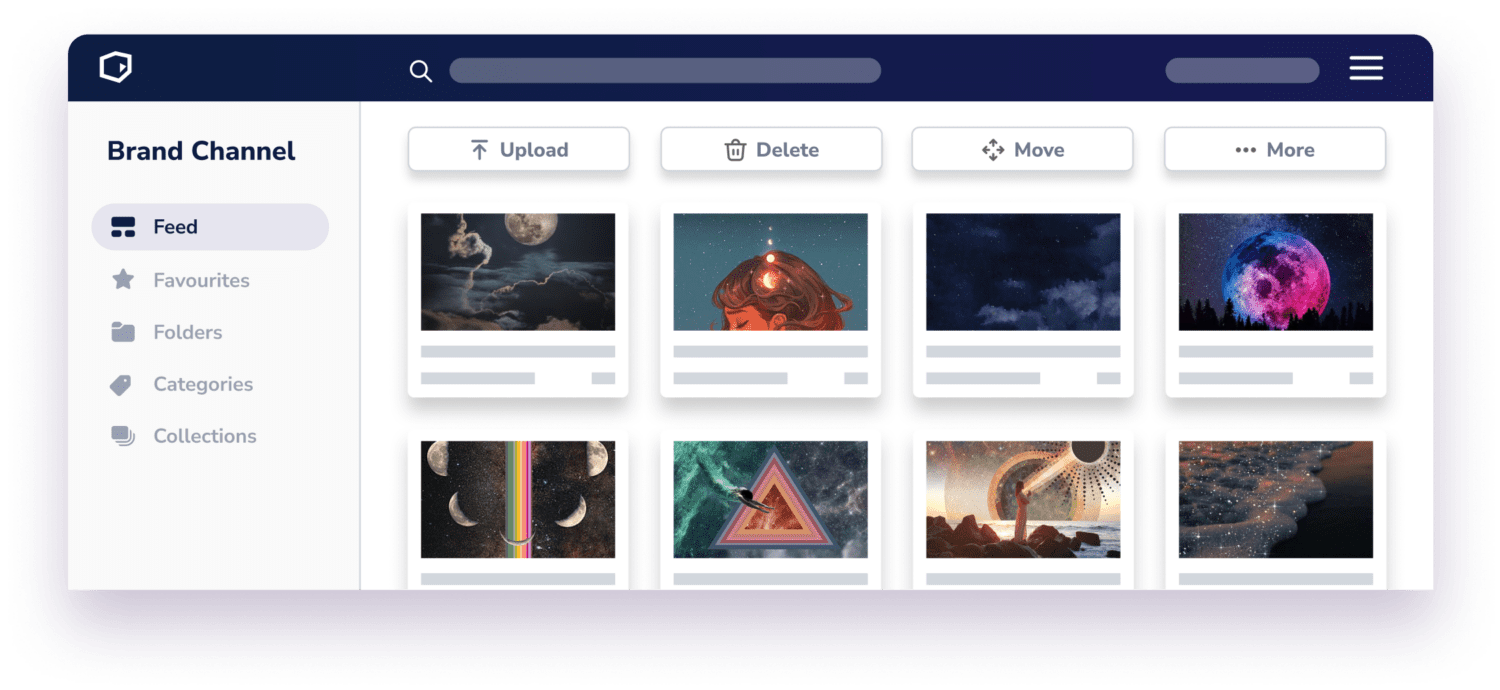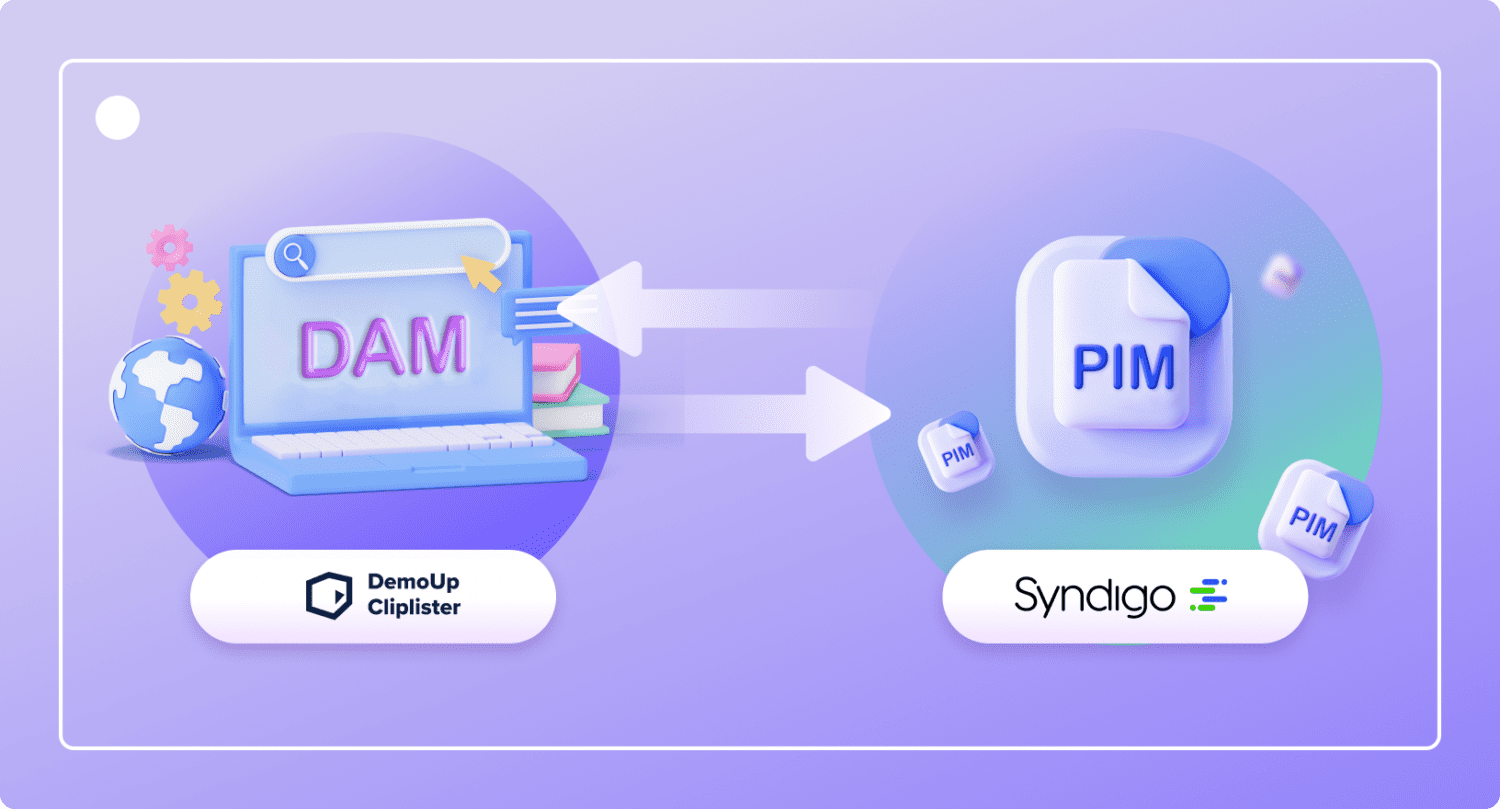Product Content Syndication: What It Is and How It Works
Content Syndication
Updated on February 14, 2025
Product content syndication is key for e-commerce brands and shops looking to boost sales. Showing off your products well and consistently online isn’t an option, it’s a must.
This guide explains how to share e-commerce content more conveniently and efficiently. Let’s explore how you can be more visible and sell more.
What is Product Content Syndication?
What is product content syndication, and why is it pivotal for your e-commerce strategy?
At its heart, product content syndication is about spreading and managing product information and media across different online stores and platforms. This way, shoppers get correct product information, no matter where they’re buying from.
For brands, it’s about giving customers a consistent experience. You send relevant content—like product descriptions, specs, photos, and videos—to various stores and online marketplaces.

As shown in the image above, e-commerce content syndication bridges the content gap between brands and online shops. In other words, it simplifies how retailers manage content and lets brands keep a firm grip on their narrative.
Put more simply, product content syndication puts your message in front of online shoppers.
Why Is Product Content Syndication Important?
Product content syndication is more than a fancy term. It’s a smart way to publish content that saves time and money. E-commerce syndication allows you to create and distribute finished content to any relevant location within a network.
Perhaps its biggest benefit is how it makes content more cost-effective. It spreads out production costs over multiple endpoints and multiplies your ROI.
For brands, syndication lets you control your content on retailer’s product pages (PDPs). This ensures your content stays on brand, and that you can rely on consistent product presentations at every shop connected to the platform.
This control is critical to keeping your brand’s image solid and shaping how customers see and feel about it.

On the flip side, retailers no longer must juggle countless brand requests to update or change content, which is a logistical nightmare.
They also benefit by sidestepping digital rights management (DRM) issues. Content syndication for e-commerce simplifies these processes. It allows for a more streamlined approach to content management.
Moreover, product content syndication builds stronger partnerships and improves manufacturer-vendor relationships. It creates an ecosystem where both parties – brands and retailers – can benefit.
According to marketing insights from Insider Intelligence, multi-channel marketing through processes like content syndication, will make up about 46% of all e-commerce sales by 2023.
How E-Commerce Syndication Works
E-Commerce syndication is simple but effective. It gives online shoppers great content where and when they decide to buy. To do this, brands need to create detailed, engaging content that shows off their product’s features.
Then, retailers must update and display this content on their product pages. However, this is where another challenge comes in. With so many brands sending information to retailers, a bottleneck occurs, and it takes a long time for your content to be published. This causes frustration to brands and retailers alike.
Content syndication offers a solution to this problem by enabling brands to update their PDP pages through the software. This teamwork ensures shoppers have all the information they need to make a purchasing decision, a key part of product experience management.
Various networks syndicate different types of content, including ours. Two common eCommerce syndication platforms are loadbee and Flixmedia. To learn how DemoUp Cliplister can replace or complement either of these two systems, book a call.
Whether you’re a brand or a retailer, the mechanics of a syndication system are tailored to fit your unique role in the supply chain. It gives you back control over your content on retailer pages and enables you to make updates and amendments in real-time.
As such, content syndication brings many benefits to both sides of the e-commerce game.
For brands, the focus is on content consistency across all retail endpoints. Retailers concentrate on enhancing content coverage on their platforms.
Let’s delve into how each stakeholder utilizes syndication to their advantage.
How DemoUp Cliplister Works for Brands
Brands aim for uniformity in their product narratives across all customer touchpoints. Using systems like DemoUp Cliplister, brands can streamline this process. Here’s a glimpse into how our syndication solution for brands works:
DemoUp Cliplister for Brands

Create content: Develop engaging and informative product content.

Upload to the system: Centralise content in one platform.

Syndicate to partners: Publish content across the retail network.

Update the content: Keep product information current and accurate.

Analyse performance: See what’s working and change what isn’t.
This five-step method brings brands big revenue boosts, cuts down time to publish, and ensures your content is always where it needs to be when it needs to be there.
How DemoUp Cliplister Works for Retailers
For retailers, the syndication system is a tool to automate the integration of product content into their PDPs. By integrating content in the DemoUp Cliplister database, retailers streamline content management.
Here’s how easy it is to delight your customers with content from more than 3,000 brands:
DemoUp Cliplister for Brands

Script integration: Copy and paste the code into your shop’s template.

Thumbnail design: Customise how you’ll display the content on your PDPs.

Test the integration: Ensure everything is running smoothly.

Matching process: Let the system align videos with your products.

Analyse results: Monitor the impact on engagement and sales.
With these five steps, your online shop can show customers over 300,000 exclusive brand assets, take advantage of automatic content updates, and understand user behavior. All of which move you toward your ultimate goal – selling more products.
4 Key Benefits of Product Content Syndication for Brands
Product content syndication has big perks that can boost a brand’s image and how people see it. Let’s look at the top four benefits brands can expect.
1. Improved Brand Awareness
Product content syndication takes your brand past old-school tactics like social media marketing and traditional advertising. It places your products right where online shoppers are looking.
This move widens a brand’s reach and grabs the attention of buyers when they’re ready to buy. Yes, even for those who haven’t seen the brand in newspapers, TV, or social media.
2. Build Trust With Consumers
Trust is the currency of brand loyalty, and consistent, high-quality content is a key investment. Content types such as review videos and 3D models are particularly effective in building trust, providing transparency, and giving real-world validation that resonates with consumers.
3. Increased Brand Engagement
The caliber of content a brand publishes directly influences customer engagement. Innovative content like 3D models and augmented reality get people involved and make a memorable impact. For a deeper dive into these immersive content types, explore our 3D and AR models.
4. Customers See & Believe
In an era of dwindling attention spans, visual content reigns supreme. Consumers prefer to see products in action rather than reading lengthy descriptions.
Brands can capitalize on this by transforming still images into dynamic product showcases by converting product images to videos, delivering product features, benefits, and use cases in a format that is both engaging and time efficient.
Your Content at 450+ Online Shops
Create, manage, and syndicate product content to the point of sale. Find out which retailers are in the network today!
4 Key Benefits of Product Content Syndication for Retailers
Retailers also gain a huge amount by integrating product content syndication into their online storefronts. Here are four key benefits that highlight the importance of this solution for shops.
1. Increased Product Understanding
Shared content like product videos, 3D models, and 360-degree views gives customers a better picture of what they’re buying. Regular product descriptions are common, but this visual and hands-on content format makes a store stand out. It gives shoppers a much clearer and more detailed view of products.
2. More Engagement
Showing brand-created content directly from the source allows retailers to present products engagingly and helpfully. It not only familiarizes customers with the brands and products but also increases the time they spend with the content. This directly increases engagement metrics.
3. Better SEO
Customers stay on websites with interesting content far longer than ones without. The more time visitors spend on a page, the better it is for SEO. It tells search engines the content’s worth checking out, which can bump up your site’s rank and visibility online.
4. More Add-to-Cart Conversions
Quality content plays a significant role in guiding customers through their buying journey. By answering common questions with clear content, retailers can make buyers less hesitant. This leads to more people putting items in their carts and fewer returns.
Exclusive Content from 3,000+ Brands
Access a network of over 300,000 product assets. Embed them in your online shop automatically.
Wrapping Up
To summarise, it’s evident that, for brands, getting product content where it needs to go is key in helping customers decide to buy. The ability to publish content directly to product detail pages helps reduce time to market and convince customers at the point of sale.
For retailers, joining a product content syndication network shares many of the same benefits. Product media introduces products in an engaging and interactive way, which optimises conversion rates, boosts customer confidence, and helps overcome barriers to purchase.
Frequently Asked Questions
Still, aren’t sure if product content syndication can help you? Have a look through our FAQs, that we collected and answered from some of our biggest clients.
Product content syndication is a process in which a company shares its product information, like product videos, 3D models, or descriptions, with various online retailers, marketplaces, or other sales channels. This allows for the widespread distribution and promotion of products across multiple platforms, increasing visibility and potential sales.
Content syndication is the practice of republishing or distributing your content, such as blog posts, articles, videos, or infographics, on third-party websites or platforms. This helps to expand the reach of your content, reach a larger audience, and drive more traffic back to your own website. It’s a valuable strategy for content marketing and SEO.
Product content syndication involves distributing product information across various online platforms. For example, a brand might distribute its product videos, demonstrations, or product reviews to various video-sharing platforms, ensuring widespread visibility and engagement, and ultimately boosting the product’s online presence and market reach.
What are the types of content syndication?
Content syndication can take several forms, including:
- Full Content Syndication: In this approach, your entire article or blog post is republished on another platform, often with a canonical link to your original content.
- Partial Content Syndication: Only a portion of your content is shared on third-party sites, with a teaser or summary that encourages readers to visit your site for the full article.
- Video and Audio Syndication: Sharing videos on platforms like DemoUp Cliplister, YouTube, Vimeo, or Wistia; or audio files like podcasts on iTunes, Spotify, or other platforms.
- Social Media Syndication: Promoting your content through social media channels, sharing links to your articles, videos, or infographics.
- Paid Media Syndication: You can republish content using native ads on various platforms and websites. Examples include Outbrain and Taboola.
There are solutions for just about everything in e-commerce. These include:
- Product descriptions
- Technical specifications
- Product data feeds
However, there are limited options for brands to publish or retailers to acquire high-quality visual content. With our syndication software, both brands and retailers can publish the following content types:
- Product videos
- 3D & AR product models
- 360-degree spin views
- Customer reviews
- Test seals & product awards
- Much more
For more information, book a call and a member of our team will get in touch.
Better Content. More Sales.

Fill out the form to discover our end-to-end eCommerce content solutions for brands & shops




